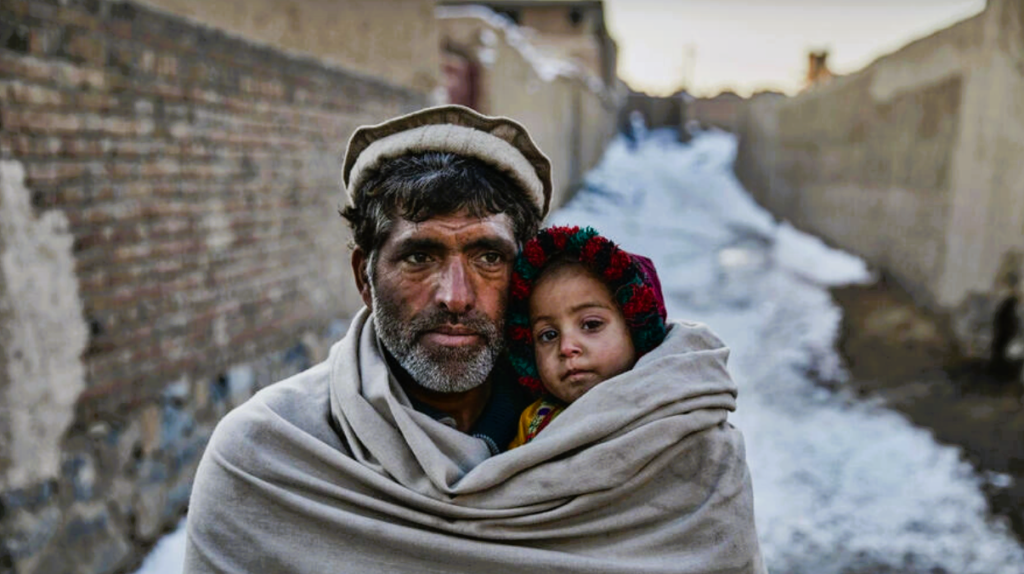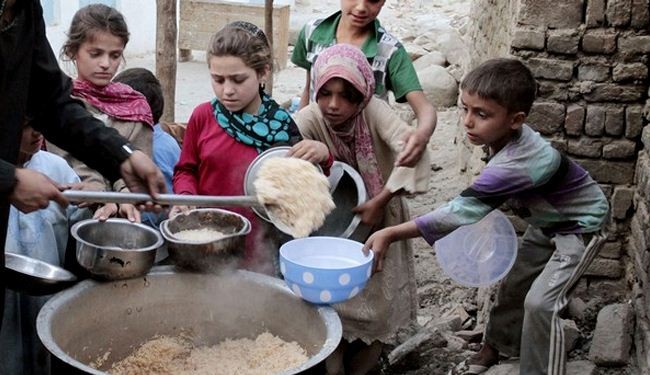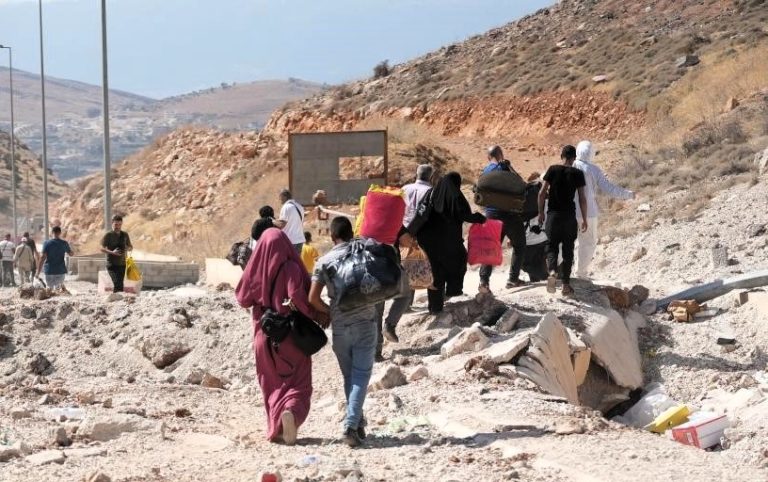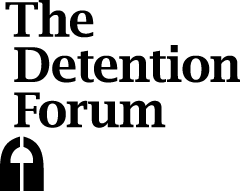
UAI launched a campaign, in March 2022, to secure the release of some US$9.1 billion – the sovereign external reserves of Afghanistan – that had been arbitrarily seized by the US government, and some of its European allies, after the return of the Taliban to Kabul in August 2021. Some US$7 billion had been deposited, in good faith, by Da Afghanistan Bank (DAB), the central bank of Afghanistan, in the US Federal Reserve Bank in New York. Smaller amounts are held in banks in Germany, Italy, the United Kingdom and in the Bank of International Settlements in Switzerland.
A Seizure with Severe Consequences
The unilateral seizure of Afghanistan’s external reserves in February 2022 by the Biden Administration was done with the de facto support of some European countries; they did not object to upending the Afghan banking system, crashing the economy, and aggravating a perilous humanitarian situation.
It is worth noting that the frozen assets are the property of the Afghan people, who had no say in the return of the Taliban to Kabul in August 2021. The assets also included the savings of regular Afghans, who were unable to access their resources as liquidity issues mounted and the economy went into freefall.
External reserves are fundamental to meeting the responsibility of a country’s central bank. A critical role of such banks is to support the economy and banking system so that they function effectively, are trustworthy and attractive to investors. Thus, the DAB, as all central banks, engages in foreign exchange markets to maintain the value of the local currency, the afghani; this helps secure price stability. The DAB must also avoid financial crises or shocks that are detrimental to trade and investment. In brief, the DAB works to ensure liquidity and avoid inflation, a problem that risks, for example, putting basics such as bread and tea beyond the reach of poor families. The lack of access to the country’s external reserves severely compromises the DAB’s ability to help maintain a well-functioning economy that is fundamental to the well-being and everyday survival of Afghans
UAI’s Proposal
The UAI campaign argues that the DAB should be given limited, conditional, and internationally monitored access to a minimum of US$150 million of the frozen funds, on a monthly basis, to allow it to deliver on its responsibilities.
In September, 2022 the Biden Administration established a “Fund for the Afghan People” as a not-for-profit Foundation in Switzerland to “protect, preserve, and – on a targetted basis – disburse its assets for the benefit of the Afghan people.” The US$3.5 billion allocated to the Fund represented half of the seized resources in the United States. Disbursements of the Fund were intended to support “Afghanistan’s macroeconomic and financial stability, thereby benefitting the Afghan people.” Governed by a Board of four Trustees, the Fund has not yet made any disbursements to re-capitalize the DAB.
The Human Cost of Inaction
The seizure of Afghanistan’s reserves is tantamount to economic warfare, if not collective punishment and should cease forthwith. It condemns the bulk of the Afghan population to catastrophic levels of poverty, hunger, deprivation, indebtedness and displacement. It also involves the troubling use of negative coping mechanisms such as young girls being exchanged in marriage so that other children can be fed.
Call to Action
UAI calls for the immediate, internationally monitored, and phased release of US$9.1 billion, and accrued interest, that belongs to the Afghan people.
Latest Publications
-
“Four years of Islamic Emirate of Afghanistan: an assessment”, by Giuliano Battiston
This piece was previously published in Italian (ISPI, 14 August 2025). Translation by Norah Niland. Four years after their return to power, the Taliban are consolidating the Islamic Emirate of Afghanistan. The Supreme Leader increasingly directs the country’s political course by centralising power, with an authoritarian drive also manifested in gender persecution — sanctioned by…
-
“Meanwhile in Afghanistan…” – UAI Statement.
In a time of distressing headlines, and searing images of distraught people in brutal warzones facing death, displacement or diminishing prospects of survival, the situation of Afghans is often dismissed, ignored or forgotten. Indeed, their suffering, after four-plus decades of armed conflict, occupation and corrupt governance, is routinely misrepresented. There is little acknowledgement of the…
-
“Refugee Repatriation: a right or a ruse?”, by Pilar Aguilar.
Refugee repatriation is often championed as a solution that honours the right of return, a fundamental principle enshrined in international law. But how closely does this principle align with the realities faced by refugees and returnees? Are their rights, or is repatriation increasingly becoming a tool of political convenience? Voluntary repatriation, in theory, must always…
Media Watch
- After the Aid Axe: Charting a Path to Self-reliance in Afghanistan, in International Crisis Group. October 2025
- After Devastating Earthquake, Afghanistan Is Still Caught in the Sanctions Trap , by Freshta Jalalzai, in The Diplomat. September, 2025
- Four Years Later: Afghanistan’s Fragile Balancing Act Hinges on Economic Recovery and More, by Ehsan ZIA, Homa NADER and Omar SAMAD, in World Affairs. August, 2025.
- It’s time to start looking for solutions in Afghanistan, by Ali M. Latifi, in The New Humanitarian. August, 2025.
- Could (and should) private investors make up for US aid cuts in Afghanistan?, by Ali M. Latifi, in The New Humanitarian. July, 2025.
- Afghan Refugees Should Not Fear Repatriation, by Cheryl Benard, in National Interest. May, 2025.
- Recognition and the Taliban’s De Facto Future, by Scott R. Anderson, in Jens Vesterlund Mathiesen and David Vestenskov (Eds.), “Still Here – Understanding and Engaging with Afghanistan after August 2021” (pp. 194–211). SMS Press.
- “Stop Work!’ Aid and the Afghan economy after the halt to US Aid“, by Kate Clark, Afghanistan Analysts Network. February, 2025
- “Why Afghanistan’s reserves remain stuck in Switzerland“, by Ariane Lüthi , in Swissinfo. January 2025.
- “America, Afghanistan and the Price of Self-Delusion”, by John F. Sopko, US Special Inspector General for Afghanistan reconstruction. New York Times. January, 2025.
- “The world should not forget Afghanistan”, by Hujjatullah Zia A Kabul-based journalist. Al Jazeera. December, 2024.
- “The economy needs to be stabilised”, by Isolda Agazzi. Alliance Sud. October, 2024.
- “Three years after Taliban return, economic woes loom large“, by Pascale TROUILLAUD, Qubad WALI and Abdullah HASRAT, August 14, 2024.
- “Working with the Taliban wouldn’t legitimate their rule”, by Saad Mohseni. The Washington Post. August 2024.
- “Inside the Taliban’s Afghanistan”, by Jean-François and Sonia Cautain. The National Interest. August 2024.
- “Afghanistan Three Years after the Taliban Takeover“, by Graeme Smith. Crisis Group. August 2024.
- “Humanitarians scramble in Afghanistan three years after Taliban takeover”, by Paula Dupraz-Dobias. Geneva Solutions. August 2024.
- “Afghan Fathers Can Be Powerful Voices for Women’s Rights”, by Charli Carpenter. World Politics Review. July, 2024.
- “How to engage with the Taliban, if you have to”, by Dr Patricia Gossman Associate director for the Asia division of Human Rights Watch and Fereshta Abbasi Afghanistan Researcher at Human Rights Watch. The New Humanitarian. July, 2024.
- “UK should restore diplomatic presence to help Afghan women“, by Patrick Wintour. The Guardian. July 2024.
- “Third World Approaches to International Law & Economic Sanctions“, by Aslı Bâli, Ntina Tzouvala, & Chisato Kimura. This series of Features Essays is an extension of YJIL’s 2023 symposium, Third World Approaches to International Law (TWAIL) & Economic Sanctions. June 2024.
- “Successful failures: economic sanctions, humanitarianism, and the undoing of post-colonial sovereignty“, by Ntina Tzouvala (@ntinatzouvala) an Associate Professor at the ANU College of Law. June 2023.
- “To aid or not to aid: behind Afghanistan’s divided relief frontlines“, Paula Dupraz-Dobias”, Geneva Solutions. May 2024.
- “Rethinking talks with the Taliban Crisis Group”. Crisis Group. 2024.
- “Out of Sight, Afghans Are Going Hungry“. Human Rights Watch, March, 2024.
- “World Bank plans meeting on Afghanistan“, Salam Watandar. February 2024.
- “A Year on, Billions in Afghan Assets Linger in Switzerland“, The Diplomat, October 2023
- “Afghan doctors warn of healthcare crisis as international aid cuts bite“, The New Humanitarian, September 2023
- From basements and back rooms, Afghanistan’s businesswomen are trying to circumnavigate the Taliban – and international sanctions, Equal Times, September 2023
- Afghans stave off starvation in the face of economic sanctions, East Asia Forum, September 2023
- Two Years After Afghanistan Exit, Biden Resists Calls for More Taliban Contact, The New York Times, September 2023
- The international community is ignoring Afghan calls to engage with the Taliban, The New Humanitarian, August 2023
- The west must stop playing the ‘Great Game’ in Afghanistan once and for all, Financial Times, August 2023
- Two years later, the US has abandoned both Afghanistan and accountability, The Hill, August 2023
- Starvation in Afghanistan: beyond the Taliban’s role (en français ici), Humanitarian Alternatives / Alternatives Humanitaires, August 2023
- The World Has No Choice But to Work With the Taliban, Foreign Affairs, August 2023
- Starvation in Afghanistan: Beyond the Taliban’s Role, Atlas of Wars, July 2023
- Afghan fund stuck in catharsis amid dire humanitarian crisis, Geneva Solutions, July 2023
- Successful Failures: Economic Sanctions, Humanitarianism, and the Undoing of Post-Colonial Sovereignty, Law and Political Economy (LPE) Project, June 2023
- Taliban Edicts, Donation Decline Prompt $1 Billion Cut in UN Aid to Afghanistan VOA, June 2023
- The West has a golden opportunity to engage the Taliban Aljazeera English, June 2023
- The survival discourse and engagement in Afghanistan Observer Research Foundation, June 2023
- Life under the rule of the Taliban 2.0 The Economist, May 2023
- Qatari Afghanistan talks spark debate over Taliban engagement Middle East Eye, May 2023
- Open Letter By “In-Country Afghan” To UN General Secretary Killid Radio, April 2023
- Afghan Women And Children Driven To Begging For Bread In Kabul (Video) RadioFreeEurope RadioLiberty, April 2023
- Afghanistan. Les États-Unis gèlent les actifs de la banque centrale, la population en paie le prix Orient XXI, April 2023 (in English)
- Taliban Prove to Be Formidable Tax Collectors, Putting Squeeze on Afghans Wall Street Journal, April 2023
- Even the Treasury Department admits sanctions don’t work Responsible Statecraft, April 2023
- Plus de 3 milliards de francs provenant d’Afghanistan sont bloqués en Suisse RTS, April 2023
- Report: Afghanistan should be open for business, but misconceptions about sanctions are increasing suffering for millions Norwegian Refugee Council, April 2023
- Access to care in Afghanistan: Perspectives from Afghan people in 10 provinces Emergency NGO & CRIMEDIM, March 2023
- Le fond afghan n’a pas rendu un centime Alliance Sud, March 2023 (also available in English)
- Against the odds: Strengthening accountability to women and girls in Afghanistan Ground Truth Solutions, February 2023
- Taliban Restrictions on Women’s Rights Deepen Afghanistan’s Crisis International Crisis Group, February 2023
- Frozen Afghan Funds Have Done Little to Sway Taliban Wall Street Journal, February 2023
- MSF report: Persistent barriers to accessing health care in Afghanistan MSF, February 2023
- Afghanistan’s critical man in the middle Asiamoney, December 2022
- As Afghans Suffer, U.S. Stalls on Plan to Return Central Bank Funds In These Times, December 2022
- What will happen to Afghanistan’s frozen funds? Geneva Solutions, December 2022
- How Afghanistan’s Money Exchangers Have Worked Around the Taliban Foreign Policy, November 2022
- Sanctions on Afghanistan: Morally reprehensible and politically irresponsible Investment Monitor, October 2022
- Afghanistan: One Year Forth, Twenty Years Back Institut Montaigne, September 2022
- A Year After the Fall of Kabul August 2022
- Judge Recommends Rejecting Bid by Sept. 11 Families to Seize Frozen Afghan Funds New York Times, August 2022
- Western disengagement will turn Afghanistan into a pariah state The Diplomat, August 2022
- 71 economists write letter to President Biden calling for the release of the frozen Afghan funds August 2022.
- International economists ask Biden to release Afghan central bank funds Reuters, August 2022
- Unfreeze Afghan assets or more hungry children may die The New Humanitarian, August 2022
- To end ‘hell on earth’ the US must free Afghanistan’s $7bn reserves Open Democracy, July 2022
- The West Is Getting Afghanistan Wrong, Again The National Interest, June 2022
- The challenges of humanitarian aid in Afghanistan Atlas of Wars, June 2022
- Tough Sanctions against Taliban Undermine Right to Food The Broker, May 2022
- How to guarantee humanitarian aid to the Afghan people after August 2021? Emergency, May 2022
- Update on UAI Campaign “Frozen Funds, Desperate Afghans”. UAI, May 2022
- Afghans Urge Court Not to Give Frozen Central Bank Assets to Sept. 11 Families. The New York Times, May 2022
- Afghanistan: Economic warfare displaces armed conflict as the core threat to survival – by Antonio Donini. Atlas of Wars, April 2022
- Afghanistan: UN experts call on US Government to unblock foreign assets of central bank to ease humanitarian impact. OHCHR, April 2022
- How America is causing famine in Afghanistan The Gravel Institute, March 2022
- Afghanistan needs compassion from world leaders, not politics – Letter The Guardian, March 2022
- The Taliban is holding girls’ education hostage in Afghanistan – the question is, why? The Conversation, March 2022
- The Guardian view on Afghanistan: It isn’t just the Taliban – Editorial March 2022
- Time running out to address Afghanistan’s hunger crisis Human Rights Watch, March 2022
- Frozen Afghan funds: The need for urgent UN Security Council Action Global Geneva, March 2022
- Afghanistan: Fighting to de-freeze the assets Atlas of Wars, March 2022
- Barely above water: Challenges of national and local NGOs navigating humanitarian space in the new Afghan context. ACBAR, March 2022
- Ex-diplomats, aid workers demand US / EU end “reprehensible” seizure of Afghan funds Wall Street Window, March 2022
- Irish MEP Clare Daly speech on the lack of media coverage on Afghanistan numuves, March 2022
- These billions belong to the Afghan people: Three family members of 9/11 victims speak out New York Daily News, March 2022
- Between a rock and a hard place – Multifaceted challenges of responders dealing with Afghanistan’s humanitarian crisis. A Report on the Perspectives of National NGOs ICVA, February 2022
- Life and Death: NGO Access to Financial Services in Afghanistan that explores the consequences of the collapse of the banking system. NRC, January 2022











